* (restored/expanded)
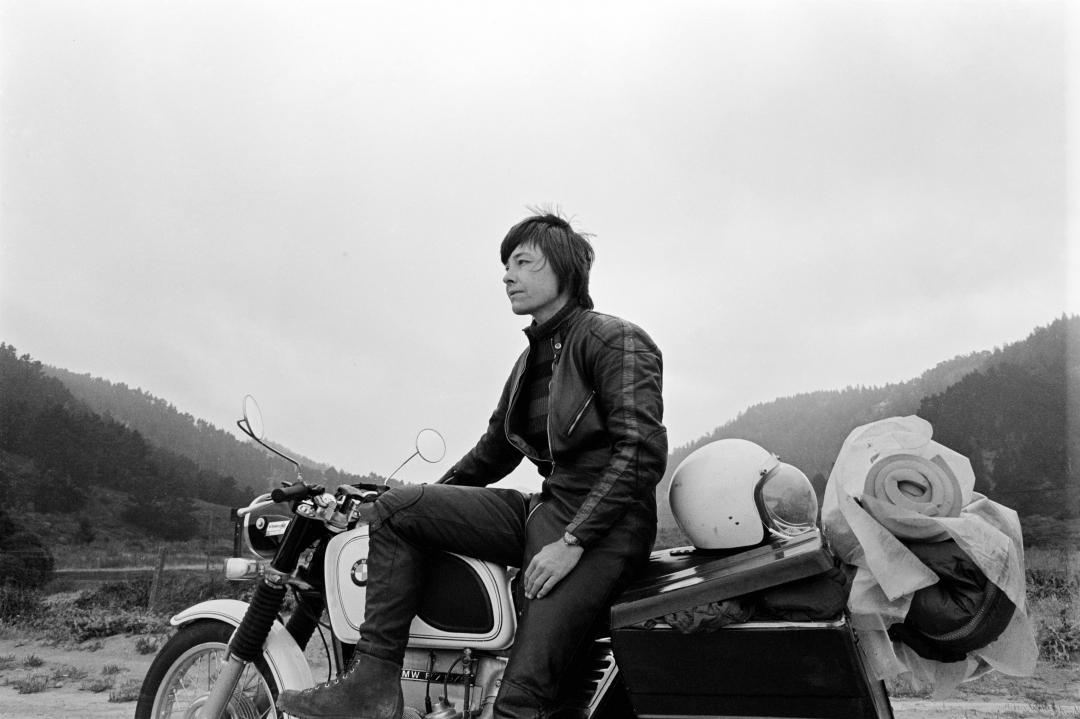
‘As with most experimental and avant-garde filmmaking in this country, feminist filmmaking has confronted the problems of minimal funding and small but appreciative audiences. An aesthetic of frugality has developed around subject matter easily accessible to feminist filmmakers — personal life and political documentation. In the case of Barbara Hammer, neither the operatic confessionals of personal life nor the “talking heads” of political documentary caught her visionary attention. It was the body, its biography and desire, and inner psychic space that incited her imagination. Her exploration turned inwards, in an attempt to disrobe herself of the false imagery of patriarchal femininity and to put in its place the heroic imagery of lesbian personal truth.
‘It is this kind of radical sincerity that is the hallmark of a new lesbian film aesthetic — a sincerity that places personal lesbian experience in higher esteem than the pretended truth of objective documentaries. In Barbara’s work this sincerity is at once particular and universal, an effect that results from her iconic and symbolic use of the lesbian body, usually her own, and her poetic documentation of personal experience. The images enable us to escape the specificity of confessional work, where a particular character names a particular truth. Instead we are invited to partake in the odyssey of one lesbian body expressing a universality common to life in a lesbian body. The effect is political rather than atomistic. The piercing nature of her images force the viewer to move beyond habitual ways of seeing, feeling and desiring, and to explore the possibility of another form of life, unencumbered by misrepresentation and misunderstanding. If we are at times jarred by the explicit and primitive beauty of Barbara’s images, these may be only the initial steps in learning how to reject the duplicity and deceit of a safe but invisible life. Barbara’s films clearly represent a lesbian body in the making.
‘Barbara attributes her unique cinematic style in part to filmmaker Maya Deren. Barbara had this to say of her first experience of Maya’s work:
“I hadn’t seen film that I identified with until I saw Maya Deren’s MESHES IN THE AFTERNOON, and then I felt I had discovered the mother of American experimental film. She was working in a genre not often seen. It was like reading a poem in cinema, rather than a story or novel, which is what comes out of Hollywood. She was a great symbolist, who for the first time looked at the complexities of the female psyche, discovered the many inner selves of the feminine personality, and tried to project them into images.”
‘Barbara’s eager adoption of the personal poetic genre came at a time in her life when her own inner psyche was beginning to disown the emblems and symbols of “straight” life. Her discovery of lesbianism became an inward journey, with images of splitting, splintering, and shedding finding easy entrance into her early films. The sense of having discovered something more universal than herself transformed this experience into a poetic and timeless event. As she says,
“The time in my dreams seems to be a time that can jump back and forth into past and future, time that is not chronologically sequential but emotionally, or symbolically, sequential, much like the illuminated moments held together by emotional integrity. One scene may be totally unrelated to another but in fact is emotionally related and so time related, if we can enlarge the word ‘time’ to encompass a feeling image that connects with other feeling images and is a particular way of experiencing the world.”
‘Although Barbara’s work falls into the strong tradition of psychodrama still prevalent among California filmmakers, her work retains unique qualities that set her apart from others belonging to the psychodramatic tradition. Most notably her use of lesbian iconography is distinctly her own. The development of this iconography in her work is interesting to follow, as the process of heroic introversion, the process of turning away and turning out to the world, is precisely a search for the iconic self as represented through the lesbian body. This body must somehow transcribe its cultural devaluation and denial into a new affirmation of self and sexuality.’ — Jacquelyn Zita, Jump Cut
____
Stills

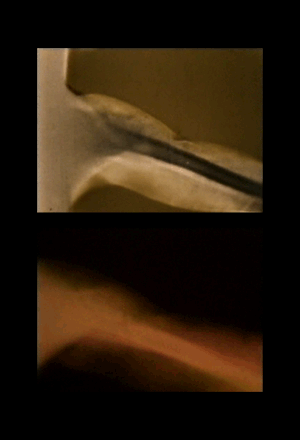
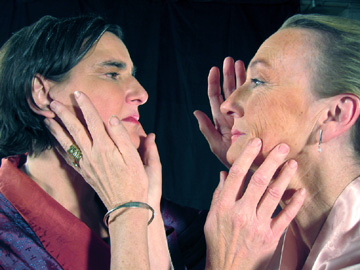
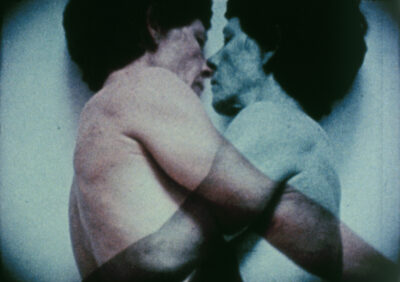

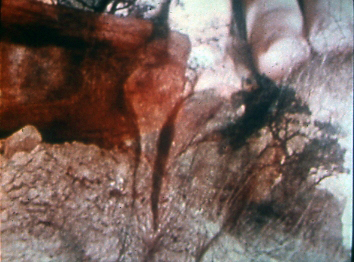



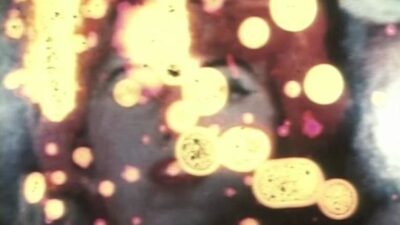

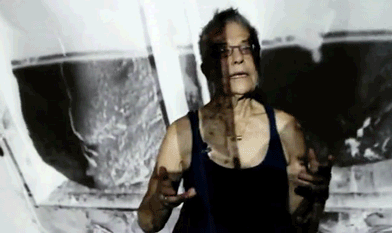
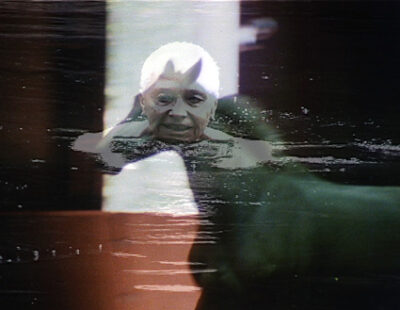







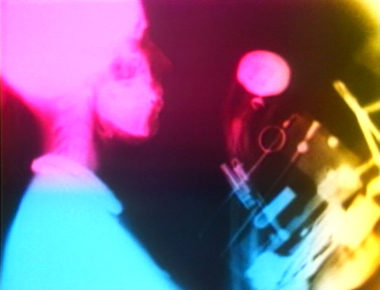












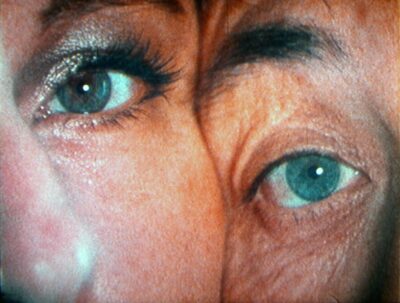









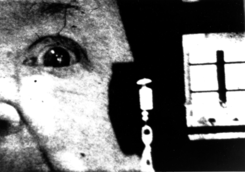
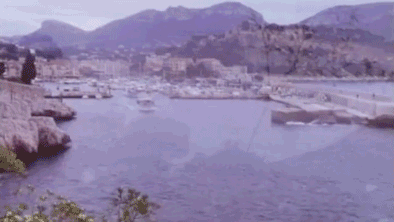
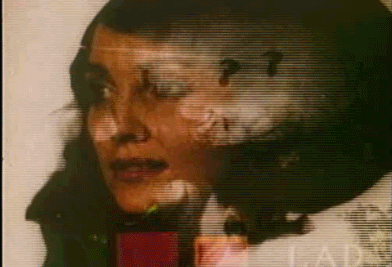
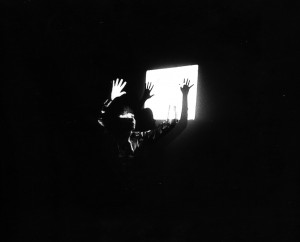
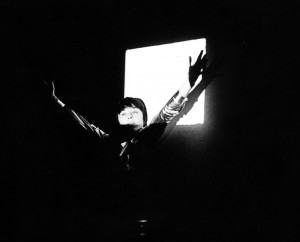



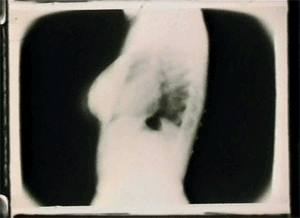






_____
Further
Barbara Hammer Website
Barbara Hammer @ IMDb
ARTISTS AT WORK: BARBARA HAMMER
Time is an Emotional Muscle
Lesbian Whale: An Interview with Barbara Hammer
How Not to Vanish: Barbara Hammer’s Resilient Gaze
A still point in a turning world: Barbara Hammer on her 50-year legacy
Barbara Hammer and the X-rays of James Sibley Watson
Experimental filmmaker Barbara Hammer looks back on her thirty-plus years in film
A body is not a metaphor: Barbara Hammer’s X-ray vision
The films of Barbara Hammer Counter-currencies of a lesbian iconography
Why Barbara Hammer Won’t Be Going to Jerusalem
This Was Not Cinema: Judgment, Action, and Barbara Hammer
Barbara Hammer Teaches (and Titillates with) “History Lessons”
A VIDEO LETTER TO BARBARA HAMMER
The Fearless Frame
BARBARA HAMMER / Abstract Strategies. A Tendency
Barbara Hammer’s flipbook fusion
_____
Extras
Barbara Hammer | TateShots
Barbara Hammer Interview – The Seventh Art
Barbara Hammer on Feminist film
What You Are Not Suppose To Look At
______
Interview
from Brooklyn Rail

Jarrett Earnest (Rail): One thing that is striking in your films is how you assume the role of a researcher. The reason art matters to me is because it can show that there are different ways of doing stuff, that there are other ways—deep ways—to know history, which is its own kind of research.
Barbara Hammer: I’m so happy that you said that because research is a big area of my life, one I love and find myself very involved in. As you spoke, I thought, oh this doesn’t really relate to my early work but then I remembered the film Menses (1974). I began it in 1973 by reading about the history of menstruation. I remember reading Pliny who said, “If a menstruating woman touches a pregnant horse, the horse’s milk will go sour.” I was trying to break deep stereotypes. What I love about that kind of research is it’s a chance to go back to school—studio work is isolating unless I take up research, then I’m having a dialogue with historians and artists of the past.
I’m studying the archive of Elizabeth Bishop at Vassar now. I’ve been there three times to photograph and copy the documents and letters. I am going to go into Bishop’s homes—I have a residency at the Cape Cod Modern House Trust, near where Bishop went to camp as a girl and established early girl friendships that she kept all her life. I don’t want to make another film like Maya Deren’s Sink (2011)—though I’m very proud of this most recent film—and I’ve never been interested in situating artists of the past within a complete historical context—as if you could! I have to find a way that I can get in and stir things up for myself. Right away what I started doing in the Bishop archive was photographing these two empty envelopes. What was in them? I was looking at their crumpledness, how they were opened. These are the more interesting things to me because I get to be a sleuth. I get to question the archive and then it really does live in the present.
I am also working with my own archive so I’m very conscious right now of preservation, archiving, and interpretation. In reading all my continual struggles in relationships, which I have noted in journal after journal, I have to think, whew, that will be embarrassing one day. Did Gauguin write about that? I don’t think so. Maybe that will be the archive of the future: the women who revealed.
Rail: Something that relates to your role as a researcher is your continued investigation and working through people’s “houses.” In Resisting Paradise (2003) you filmed around Claude Cahun and Marcel Moore’s home in the Isle of Jersey, the places Maya Deren lived in for Maya Deren’s Sink, and it sounds like Elizabeth Bishop’s childhood locations are getting a similar treatment. What type of knowing does the experience of these places offer you?
Hammer: I’ve always felt that where I live really influences what I make, and since I’m not living in the woods like a wild-child (although I’ve tried) I am in a home. Either I was a married woman, carving out a space for myself to paint in the basement of a house we built in the woods, or I was this roaming dyke during the 1970s (which was my adolescent coming out period even though I was 30) moving from house to house, moving from lover to lover—there was no settlement, so the films are short as well as intimate. I would work differently if I had a warehouse; I’d be an installation artist! I have a lot of ideas for projection projects but in order to get them off paper and really get into the piece I need to have a space. I talk to Carolee Schneemann, who lives upstate, and she says, “Well, Barbara, you could build yourself a warehouse.” Maybe I could now, but to me energy is art and you don’t have as much energy at 73 as you do at 33. I’m not sure I have the energy to make those huge installations now, but I think that is one way the work could have gone given a different environment.
Maya Deren is my mentor, mother, progenitor, as the mother of American Avant-garde film. Her work was often made within her own space, by transforming the furniture, moving it, covering it, having a dancer in front of the fireplace. But she also used her friends’ homes, for example, she shot the huge dinner scene in At Land (1944) in Buffy Johnson’s loft. When you work with a small budget you work with what’s around you, and you have more creative freedom in your own home. When I made Dyketactics (1974) my lover and I made love on the floor of her house. When I made Nitrate Kisses (1992) I invited two women I met in leather costumes at Judith’s Room, a feminist bookstore that unfortunately no longer exists. They drove up on motorcycles with their leather costumes and chain dresses coming in past the guards at Westbeth. I just loved that. So you can break taboos in your own home without being arrested [laughs].
Rail: There is a moment in Women I Love (1976) when you reconstruct an artichoke in reverse that reminds me of Cocteau re-piecing hibiscuses in reverse in Testament of the Poet.
Hammer: That’s great; I’d never make that connection. In Women I Love, each one of those fruits or vegetables literally represented a woman I loved.
Rail: No! I was so swept up in the beauty of the images I didn’t make that connection.
Hammer: Yes! The onion references a woman who made me cry a lot, the broccoli represents a woman with multiple arms (or so it seemed), but the artichoke was the winner because she could go forwards or backwards; there was always more to unpeel [laughs]! The artichoke was homage to a great artist who is now unfortunately deceased, Gloria Churchman. She was a shy artist, she drew and painted, and we made Moon Goddess (1976) together, which was the first time I started projecting onto inflated balloons. I just wanted to mention her name because she never got recognition, even from her relatives, who threw out one of the two prints of our film. Fortunately, it was restored by Colorlab for my MoMA retrospective.
That is a wonderful, lush thing about having a retrospective: if you’ve made over 80 works and you haven’t looked at them for a long while, you get to see them as a curator quite differently. You re-cognize, become re-cognizant of some major works that you thought were okay or fit in your development but didn’t stand out as the minor masterpieces that they are.
Rail: Was Gloria the woman in Women I Love who stands behind you touching your breasts when you have the camera on your shoulder, filming into a mirror?
Hammer: Yes. Talk about intimacy! Yes, she had this big broad face that was so sensitive. I re-photographed that sequence of her playing with my breasts and slowed it down because I shot it at two frames a second, probably to capture more light in the bathroom. When I saw what I had, examining those individual frames, I knew I had to give each frame five to ten extra extensions so that we could appreciate the joy, the pleasure and the play. We should really talk about play.
Rail: Okay, let’s talk about play, my favorite subject. I thought the first film that played at Jeu de Paume, Two Bad Daughters (1988), very clearly got at the way you think about play as a subversive strategy.
Hammer: I made Two Bad Daughters in 1988 with Paula Levine; we undertook this visual and sonoric play together to undercut the theoretical tone of the 1980s that “the author was dead.” By making ourselves a double author and using artifacts from “the father’s house” as playthings, we hoped to subvert theory reinstating ourselves as artists within a historical context. Through play you can find so many new ways to achieve, to make, to change without a whole lot of baggage. Play is considered light and unthreatening, and this makes it a strategy to work around or burrow underneath sticky conundrums.
Rail: One of the reasons I like those films from the 1970s especially is the way they are doing something with intimacy that is twofold: thematizing intimacy by depicting touching or kissing but also reenacting an experience of intimacy on a formal level—the pace of the editing and using abstraction and texture. What brought you to these aesthetic decisions?
Hammer: My life changed when, as a heterosexual woman, I made love with a woman. My sense of touch increased incredibly. I don’t think I was aware of it as a sense as important as “taste” or “sight” or “sound” during my heterosexual life. The way I propose that this sense developed for me was through making love or touching a woman whose body was similar to my own. The largest area of our brain is connected to touch, and the largest part of that area is our nerve centers for our thumbs and our clitoris, in the case of a woman. No wonder my sense of touch increased! I think abstraction is very physical as well; it’s not mental. When I look at a spray painting without any kind of line in it I have a real sense of those particles. It’s a connection between sight and touch that maybe I always had, but didn’t really connect to it until I came out. When I look at the world, like I’m looking at this parquet floor, from my view I feel in my body as if I were to touch it. Some people have called this kinesthesia, or the haptic sense. The emulsion of film is a skin itself, and some people develop their own emulsions, believe it or not and scratch and pull the skin off the film and re-photograph it. I’ve burnt it, punched it, and worked extensively with an optical printer to get that sense of permeability and peeling.
I think maybe it comes from a depravation of touch. I’m a white middle class girl, and even though I wasn’t raised with any religion, which I consider a blessing, my family didn’t physically touch that much. My mother was the daughter of immigrants from Ukraine and my grandfather was rather strict about ideas and religion—he tried to stomp on my guitar. My grandmother was possibly only 13 when she left the Ukraine, she came alone through Ellis Island. I don’t think she had much nourishment herself and so had little to give my mom. When I did find that through perception I could have a sense of touch, it was fulfilling.
Rail: As we know, the optic mechanism that allows us to bridge the gap between frames is the “after image” that lingers long enough on the retina to create a sense of fluid continuity. In your writing you signal that there might be a kind of bodily after image, or muscle memory that carries the physical-emotional continuity of the film and also from life/memory to film experience and then back to life. Can you talk to me about your writing on film-time and structure as it relates to the body?
Hammer: That is such a beautifully phrased question! I think of the simultaneity of time: when we are experiencing this moment we are also experiencing everything else that we’ve ever done in our lives. Time is not linear, and it’s not circular either; it’s sort of like an energy field. I think Gertrude Stein writes like that—with the use of verbs. That’s why it’s not “Women I have loved” but “Women I Love” because it continues—it isn’t a cut off historic sense of the past. If that is my way of experiencing history and time then that allows me to conjoin two different historical periods in a cut or collage. For instance, I found the archive of Dr. James Sibley Watson, maybe the first gay American filmmaker, who made Fall of the House of Usher in 1928, and in the outtakes of his film Lot in Sodom (1933) there are men wearing loin cloths that he’s directed to wrestle. In my own film, Nitrate Kisses, I direct the performers and filmmakers Jack Waters and Peter Cramer to play, and they choose to wrestle. I bring this similar Watson footage of wrestling from the 1930s and 1990s together and by doing so link gay history. I’m saying this is part of gay culture that continues, remnants of the past that continue into the present. That is one way of thinking about time. Time is an emotional muscle. If I can connect with my audience through images or editing structures that create emotions then they are there as physical bodies experiencing the film. They are released when the film turns meditative, and I hope then that they experience the world differently when they leave the cinema. The first time I saw Brakhage’s Dog Star Man (1961-64) at the San Francisco Cinematheque I remember I looked at trees as I was walking down the street and I saw the world differently. I had a sense that my perception had changed through watching this film.
Rail: I’ve been thinking of Stein’s long poem Lifting Belly, the way the language is opaque in such a way to create a textured surface, it is a use of “abstraction” to articulate queer desire in a historical moment when that was not permissible. How has your use of abstract, textured images connected with that lineage, while also being very explicit in its depictions of sex?
Hammer: The textural quality of the abstract film image creates a sense of touch not unlike the language of Lifting Belly where Gertrude Stein keeps words in the continual present through abstraction. If there is no literal representation by the word of a thing or a time (past tense, future tense), by the image (layered, color fields, soft outlines), the physical reading of the word, the image is more stimulating to the mind, which is, of course, part of the body. The entire body then is involved in the “reading” and with the total body involvement touch is brought into play. One could even go so far as to say that since “touch” has been so little studied that it carries as one of our senses an abstract quality. It is also exciting in an intellectual way. Desire is created intellectually, it is something that you don’t have/can’t have. One doesn’t have the “out” as Gertrude Stein is talking about her lover’s multiple orgasms in plain English, but there is the rising belly: “Question and butter. / I find the butter very good. / Lifting belly is so kind. / Lifting belly fattily. / Doesn’t that astonish you.” That kind of thinly veiled abstraction makes us want to know more, generates desire, brings us into the field of desire “two women together in bed.” Or on the kitchen floor—oh my, Gertrude Stein on the kitchen floor, I have work to do [laughs]!
Rail: You made Sanctus with hand-painted archival footage of X-rayed moving skeletons in 1990. I can’t help but see this as connected to AIDS and the climate of the culture wars. As someone who was making important work about the body from the 1970s on, what are the shifts you’ve seen?
Hammer: To historically recount: in 1985 Jan Zita Grover, the writer and critic, introduced me to the politics of AIDS and representation. She couldn’t believe I was doing abstract landscapes and underwater work in a period of AIDS. Her critique changed my work and I made SnowJob: the Media Hysteria of AIDS (1986). By the time I got to the 1990s and found the archive of Dr. Watson and his research associates, who X-rayed the body in motion, I was very aware of the fragile human body. Not only the unresolved issue of AIDS but also the environmental issues that threaten the body, and aging itself, of course. Today I’ve gone through cancer treatments and chemotherapy, which brings forth another invisibility of the body as it struggles to survive in my film A Horse is Not A Metaphor (2009). What still has not been seen much is the aging woman’s body, which I am very aware of because I am the aging woman’s body. Yes, we have two old women making love in Nitrate Kisses, but that isn’t the “aged body”—they’re still glorified in their chiaroscuro lighting, filmed in beautiful black-and-white. We’ve never really accepted the wrinkle as the sign of lived experience. Signifiers of age haven’t truly been recognized or appreciated in our society. We’ve had so many turn arounds in cultural awareness—wouldn’t it be amazing for the next to be a world where the elder is really honored and respected.
Rail: Multiple Orgasm (1976) shows close ups of your vagina as you masturbate to orgasm eight times, then close-ups of your face during climax, all flowing in and out of landscape images. You showed these films separately, to solely female/lesbian audiences and then to “mixed” audiences, where men could also attend. Could you talk about your decision to screen separately?
Hammer: For the screenings around Europe I would usually ask the group: Do you want a woman’s only screening or do you want a mixed screening? In Vienna, the women wanted to have two screenings, one woman only and the other mixed, and I showed the same films. During the mixed audience show when Multiple Orgasm played this man started screaming when he saw a vagina full screen—he was shocked. A woman yelled at him, “If you don’t like it, leave.”
At some point the film isn’t about your own body—it’s a representation. Multiple Orgasm is not plural, because in a way one orgasm is all orgasms—it is silent because I wanted the audience to hear themselves breathe, but everybody always holds their breath, so it doesn’t work. The whole point of that film was to see what you can’t see, which is all my work from the 1970s: “lets look at it!” How can you watch your own orgasm, particularly your face during climax? My god, it looks like a baby, it was thrilling! All phobias are washed away. In the 1970s people in my social group were going to the Institute for Human Sexuality and watching film after film of people making love—to see sexuality finally as just part of life rather than as filled with romanticism. We were experiencing ourselves using mirrors and studying the sexual response cycle, it was almost medical. When I shot Multiple Orgasm it looked so scientific. I was camping with Gloria Churchman in Capital Reef National Park in Utah and the rockscape was beautiful like a woman’s body. If I were to make it today I would show it straight up without the landscape overlays.
Rail: I have a huge amount of affection for your work from the 1970s. There’s a sensibility in those works that says, “I’m trying to deconstruct the systems that have structured and naturalized my conception of what life is like and really just start over”—a profound place for an artist to approach the world from. You’ve managed to marry that search with delightful sense of generosity as a thinker and a maker, so I really wanted to say thank you for that.
Hammer: Moving from film, to installation, to photography, to book, to this interview is the same circle and I am so glad we are in this moment together. Thank you for your interest and questions and may we continue to play!
_____________
18 of Barbara Hammer’s 43 films
______________
Dyketactics (1973)
‘A popular lesbian “commercial,” 110 images of sensual touching montages in A, B, C, D rolls of “kinaesthetic” editing. “The images are varied and very quickly presented in the early part of the film, introducing the characters, if you will. The second half of the film slows down measurably and all of a sudden I found myself holding my breath as I watched the images of love-making sensually and artistically captured.”‘ — Elizabeth Lay, Plexus
Trailer

________________
Superdyke Meets Madame X (1976)
‘If Dyketactics is the starter for Barbara Hammer’s experimental LGBT-led experimental films, then Superdyke Meets Madame X is the main dish for my second watch in Hammer’s filmography. Superdyke… is a longer short film than its elder sister, clocking in at 19-minutes but it is slightly different in its depiction of a lesbian relationship. Hammer once again stars along with her unknown partner and the film acts as a rawer documentary, more so than Dyketactics. The unprocessed video footage of Hammer speaking directly to her girlfriend shows the clear intimacy of a relationship of that nature – Hammer tells her to wait until her nude body becomes worn at the age of 80 and implies that they will still be beautiful together forever after, and that’s told from her warm smile and warmer body language.’ — Aidan Fatkin
Trailer
the entire film
________________
Bent Time (1983)
‘Bent Time (1983) is influenced by scientists who have noted that light rays curve at the outer edges of the universe leading them to theorize that time also bends. A one-point perspective visual path across the US beginning inside a linear accelerator – or atom-smashing device – and traveling to such high-energy locations as the home of an ancient sun calendar in Chaco Canyon, New Mexico; the site of Ohio Valley Mound cultures; the Golden Gate and Brooklyn Bridges; and beyond. Inspired by this idea, I used an extreme wide angle lens of 9mm and “one frame of film per foot of physical space” to simulate the concept of time bending. The soundtrack is “Rattlesnake Mountain”, an original score by Pauline Oliveros.’ — bh@v
Excerpt
__________________
Optic Nerve (1985)
‘Barbara Hammer’s Optic Nerve is a powerful personal reflection on family and aging. Hammer employs filmed footage which, through optical printing and editing, is layered and manipulated to create a compelling meditation on her visit to her grandmother in a nursing home. The sense of sight becomes a constantly evolving process of reseeing images retrieved from the past and fused into the eternal present of the projected image. Hammer has lent a new voice to the long tradition of personal meditation in the avant-garde of the American independent cinema.’ — John Hanhardt
Excerpt
________________
No No Nooky T.V. (1987)
‘NO NO NOOKY TV posits sexuality to be a social construct in a “sex-text” of satiric graphic representation of “dirty pictures.” Made on an Amiga Computer and shot in 16mm film, NO NO NOOKY TV confronts the feminist controversy around sexuality with electronic language, pixels and interface. Even the monitor is eroticized in this film/video hybrid that points fun at romance, sexuality, and love in our post-industrial age.’ — Filmmakers Coop
Excerpt
the entire film
______________
Two Bad Daughters (1988)
‘I made Two Bad Daughters in 1988 with Paula Levine; we undertook this visual and sonoric play together to undercut the theoretical tone of the 1980s that “the author was dead.” By making ourselves a double author and using artifacts from “the father’s house” as playthings, we hoped to subvert theory reinstating ourselves as artists within a historical context. Through play you can find so many new ways to achieve, to make, to change without a whole lot of baggage. Play is considered light and unthreatening, and this makes it a strategy to work around or burrow underneath sticky conundrums.’ — Barbara Hammer
the entire film
_______________
Sanctus (1990)
‘Sanctus (1990) is a heavily collaged piece comprising X-ray pictures taken of female subjects in the 1950s by Dr James Sibley Watson, a New York-based medical doctor and filmmaking enthusiast. Hammer treats the footage of this erstwhile publisher, philanthropist and pillar of the community with heated disdain, cropping and burning it, giving the women back a kind of subjecthood even as they perform for the camera, washing their hands, drinking milk, putting on make-up. These skeletons even have a threatening aspect, accompanied as they are by Neil B. Rolnick’s bombastic soundtrack, which uses parts of Mozart’s Requiem and, much too loud for comfort, recalls chorals and the ringing of church bells. There was something church-like about the show as a whole: but if it was a church, it was one of rationality, of the female subject, and of the human subject.’ — Frieze
Excerpt

_____________
Nitrate Kisses (1992)
‘Hammer assembles Nitrate Kisses as a queer biography, and a call to arms for lesbians, gays and anyone else whose sexuality and gender expression do not meet societal norms to tell their stories. After some text, the film begins with voice over discussing a woman who liked to dress in men’s clothing and lived with another woman for the majority of her life. Her name was Willa Cather, and her entire sexual history is lost to the world, because it was burned after she died. The task of the biographer is to recall the life of a subject, but it is impossible to tell that story when that story has been denied existence. Willa Cather made sure a part of her life was hidden, but this denial of narrative reached far beyond Cather’s decision to muddy her history. It expanded all over the entire world from America to Germany and everywhere else. In one scene, a character discussing the Hays Code recounts the restrictions that censorship ruling had against gay and lesbian art in cinema. From 1931 up until the late 1960s, it was clearly prohibited to tell the stories of gays and lesbians in film unless it was under heavy subtext. This period is referred to as “The Dark Ages” by many in Nitrate Kisses, and the folks discussing cinema recall the difficulty of living in that time period up through the raid on Christopher Street. The Hays Code did not bring about the ending of gay and lesbian censorship, but as one woman put it, “It brought about a time for stories where we’d be punished for our sexuality.” The Hays Code directly effected the type of stories Americans were seeing in their motion picture houses, and as a direct rebellion of those outdated-hateful rules, Hammer uses a close up of one man’s penis dragging across another man’s ass as the prehistoric code rolls up the screen. It’s our very own Star Wars.’ — Willow Maclay
Excerpt
the entire film
______________
Out in Africa (1995)
‘Out in South Africa is a documentary about a country in the state of transition; specifically of lesbians and gays, black and white, Indian and Asian, from townships, cities and rural areas who speak of their lives and desires as homosexuals in post-apartheid South Africa. Hammer was invited to have a retrospective in summer, 1994, at the First Gay and Lesbian Film Festival on the African continent. She wanted to do more than screen her films and videos; she wanted to teach video production skills in the townships. These workshops provide the deeply moving stories lesbians and gays told to one another.’ — bh@v
Excerpt
______________
Tender Fictions (1996)
‘Pioneer lesbian-feminist filmmaker, Barbara Hammer, constructs an autobiography before someone does it for her in this post-postmodern sequel to her award-winning documentary Nitrate Kisses. Lesbian autobiography is a slender genre, so Hammer draws from general culture studies for critique with ironic synthesized “voices of authority”. Archival footage of the AFL/CIO faculty strike at San Francisco State, Black Panther Party rallies and early Women’s Music Festival and a Take Back the Night march enrich the context. Hammer challenges a younger generation to visualize a world before they existed.’ — bh@v
Excerpt
_______________
The Female Closet (1998)
‘The Female Closet (1998) is an experimental documentary by Barbara Hammer that explores the closeted and not-so-closeted lesbian histories of artists Alice Austen, Hannah Höch, and Nicole Eisenman. Utilizing groundbreaking research, newly discovered home movies, archival photographs, and other visual sources, this under-screened documentary provides a timely reminder of the importance of creating, archiving, and making accessible feminist artwork.’ — The Whitney
Excerpt
_______________
History Lessons (2000)
‘Almost entirely a pastiche of clips from celluloid’s more obscure annals, feature announces its prankster intent right away by presenting footage of Eleanor Roosevelt addressing a women’s group — but with her speech tweaked so that she seems to be urging sisters to unite in carnality as well as community activism. From there Hammer builds a vaguely chronological phantom “history” of lesbian in-ya-face-dom throughout the last century, deploying funny visual juxtapositions and cheeky audio manipulations. A fascinating archival dig, “Lessons” draws on clips as far back as film’s infancy, traipsing further through “naturalist” nudies, newsreels, women’s sports footage (including a Leni Riefenstahl excerpt), WWII Women’s Army Corps glimpses, classroom sex ed pics, “girl-on-girl” stag reels, Poverty Row melodramas, upscale ’62 lesbian angst drama “The Children’s Hour” (with pre-suicide Shirley MacLaine sobbing out her “disgusting” love for fellow schoolmarm Audrey Hepburn), Harlem Renaissance documentation, actual “dyke bar” police busts, antique commercials and so forth. None are identified individually, not even in closing credit crawl, but their relative anonymity works well for the hijinks Hammer is up to.’ — Variety
the entire film
_______________
Devotion: A Film About Ogawa Productions (2000)
‘Devotion investigates the extremely complex and heirarchical relationships among a committed group of Japanese filmmakers who dedicated up to 30 years of their lives making films for one man-Ogawa Shinsuke. Members of Ogawa Pro filmed the student movement of the late 60’s; the fight by farmers to save their land from government confiscaton for the Narita airport at Sanrizuka; and the village life of a small farming community, Magino Village, in northern Japan. These heartbreaking and sometimes funny stories have never been told on film before. Rare footage, stills, and diaries with interviews with Oshima Nagisa, Hara Kazuo and Robert Kramer make this historical inquiry visually exciting as well as valuable.’ — bh@v
Excerpt

_______________
Resisting Paradise (2003)
‘What does an artist do during a time of war? Renowned documentary filmmaker Barbara Hammer crafts an elouent layered examination of the artist’s and individual’s role in times of conflict. Featuring Henri Matisse, Pierre Bonnard and Matisse family members as well as resisters Lisa Fittko and Marie-Ange Allibert, Resisting Paradise is a compelling look at the intersection of art and life in complex times.’ — bh@v
Excerpt

_______________
Lover Other: The Story of Claude Cahun and Marcel Moor (2006)
‘1920’s Surrealist artists Claude Cahun and marcel Moore come to life in this hybrid documentary. Lesbians and step-sisters, the gender-bending artists lived and worked together all their lives. Heroic resisters to the Nazis occupying Jersey Isle during WWII, they were captured and sentenced to death.’ — bh@v
Excerpt
______________
A Horse Is Not A Metaphor (2008)
‘The filmmaker, fighting ovarian cancer, stage 3, returns to her experimental roots, in a multilayered film of numerous chemotherapy sessions with images of light and movement that take her far from the hospital bed. A cancer ‘thriver’ rather than ‘survivor’, Barbara Hammer rides the red hills of Georgia O’Keefe’s Ghost Ranch in New Mexico, the grassy foothlls of the Big Horn in Wyoming, and leafy paths in Woodstock, New York changing illness into recovery. The haunting and wondrous music of Meredith Monk underscores and celebrates in this film that lifts us up when we might be most discouraged.’ — bh.com
Excerpt
_______________
Maya Deren’s Sink (2011)
‘Maya Deren’s Sink, a 30 minute experimental film, is an evocative tribute to the mother of avantgarde American film. The film calls forth the spirit of one who was larger than life as recounted by those who knew her. Teiji Ito’s family, Carolee Schneemann and Judith Malvina, float through the homes recalling in tiny bits and pieces words of Deren’s architectural and personal interior space. Clips from Maya Deren’s films are projected back into the spaces where they were originally filmed appearing on the floorboard, furniture, and in the bowl of her former sink. Fluid light projections of intimate space provide an elusive agency for a filmmaker most of us will never know as film with its imaginary nature evokes a former time and space.’ — IMDb
Excerpt

______________
Welcome to this House (2015)
‘With her latest work, Barbara Hammer, who is known for films about lesbian life, history, and sexuality that draw upon avant-garde tradition, examines the little-known aspects of the life of the Pulitzer Prize–winning American poet Elizabeth Bishop (1911–1979). Hammer’s film, shown here in its New York premiere, explores Bishop’s inner life through the homes in which she lived and wrote—from childhood to her final days—and through the more private and sensorial poems that were published after her death. Featuring music composed and performed by the experimental singer and musician Joan La Barbara; Bishop’s intimate poems read by Kathleen Chalfont; three actors representing Bishop’s physical presence at different stages of her life; and interviews by historians, poets, and students, Welcome to This House sensitively portrays a complex, private, and challenging writer whose poetry continues to inspire.’ — MoMA
Excerpt
*
p.s. Hey. ** myneighbourjohnturturro, Hey. Oh, cool, happy to reinitiate your noisenik. Wow, yes, the ‘PGL’ DVD does seem to be o.o.p. I had no idea. I’ll ask the distributor. I did find a place where it seems to be buyable. Here. But, yeah, hm, I’ll look into that. I think Bonello is very uneven, but I am curious to see the new one. I’ve heard mixed but sometimes good things about it. Double espresso to you. ** Bernard Welt, Hey! I’m not that busy. If you have time, I’m sure we can sort a meet up time. Let me know what’s good. ** Misanthrope, Hi. People here who care are thinking Sinner is gonna win. I’d go to the Open if I were you and if I were there, even though I guess that’s hypocritical since I’m not hitting up nearby Roland Garros. I tried playing tennis twice, and it was humiliating. Table tennis, now that’s another matter. ** Lucas, Hi Lucas! Wow, I love those Phil Ochs albums. What great choices. He’s so overlooked, it’s just wrong. I guess I’d probably pick a Guided by Voices album boringly, but so it goes. I think, thinking about it, that, yes, nothing is better than bad. Better that one dies and rots away than going to hell, I guess, for instance. I’m very happy you’re writing. Don’t worry about its quality. One, it’s really hard to judge oneself, and two, you can fiddle with it later. My first drafts are always miserably terrible. I can’t decide if I want to be the woman in that gif or the turning tape reels, if that’s what they are. Here’s my friend Ange wishing you an early happy birthday. ** _Black_Acrylic, I know, I know. I do have a very nice turntable in my LA pad. Surely that counts for something. ** Dominik, Hi!!! I hope the post made your bro do cartwheels. Yay, love did good. I’d read that zine. Oh, have the loveliest time back ‘home’ — interesting that you call it ‘home’ — and I’ll look very forward to seeing you and overhearing the trip highlights next week. Love serving everyone on earth cocktails, G. ** Bill, Yeah, that was wild, right? Enjoy your out-of-towners. Paint the town with them. Don’t get too sweaty. Don’t let the bed bugs bite. Man, that Brian Evenson is one prolific motherfucker. ** Steve, If you weren’t inside it, your body wound deserve a spanking. What brat. I’ll ask Yury once he awakens. It’s true, Tumblr was almost as hard to search as this blog is. Everyone, Steve’s latest reviews are composed of his June music roundup for Gay City News, on Arooj Aftab and Pride Month Barbie here, and his review of Takashi Miike’s new one LUMBERJACK THE MONSTER here. ** Charalampos, Hi, Oh, yes, the UK/EU edition is sorted at last, it seems. Is there no bio of Paul Morrissey? Given his very complicated person — wild filmmaker but politically reactionary right wing guy — it would have to be pretty interesting. Hi from warm but not yet hot Paris. ** Harper, Hi. Yeah, I was thrilled to have it. Next time I go to LA where my Little Caesar stuff is kept, I’ll scan it. I like and admire and share your ambition. We’ve talked about Blanchot, yes? Trust me, you are not talking out of your arse, or, if you are, you should hear my arse talk. Okay, the questionnaire does make its housing venue sound promising. All my fingers are stranglingly crossed even though that makes it quite hard to type. But I persevere because it’s important. Any idea when you’ll hear? ** Justin D, Howdy, Justin. I’m very happy the records got your wheels spinning. Sorry, that spinning x spinning thing was an accident. Happy b’day to your dad. My dad was similar on the gift front, but I never felt bad because, literally, on every birthday of mine from childhood to his death, he always gave me the same thing: a beige sweater. Even though I’ve never worn or ever wanted to wear a sweater in my life. Your day sounds fine. Mine was email catching up, which was good, and some film crap, which wasn’t good. And drifting about in between them. Could have been worse. Did your Thursday pony up anything upbeat? ** Uday, We’ll sort out a signed book thing when the time comes. Shouldn’t be too hard. Yes, I saw that the election was not as terrible as it seemed like it was going to be. Whew. Vaping: Uh, I still think it looks kind of silly and slightly embarrassing when I see people vaping. Although there’s this one type that has all these coloured lights on them that turn on and flash and spin and stuff when someone inhales, and those are just enough like a little amusement park ride that I’m kind of charmed by them. ** Nicholas, Top of the morning. Yikes, that’s crazy, I’m glad it was so easily sorted. I ate veggieburger and tofu patties and microwaved mashed potatoes smushed together and wrapped in two tortillas. You? I don’t think I have a lucky number, but it would an odd number. I don’t like even numbers. They weird me out. What’s yours, if you have one? ** Racso 🌀, Haha, nice. Your new name suits you. Isn’t one of the main characters in ‘Midnight Cowboy’ named Rasco? Probably not. Thank you, because when there are news items with Hi Dennis (Cooper) in the title they’re usually either about the Dennis Cooper who produced and directed TV series like ‘Miami Vice’ and ‘Chicago Hope’, or they’re about Monty Python’s ‘Jabberwocky’ whose main character is named Dennis Cooper, or they’re about this guy named Dennis Cooper who hosts a popular conspiracy theory podcast. You passing by a hippie on a street corner who looks at you says ‘High …’ *wink wink grin* ‘… Oscar’. Thanks about the post. I do really like listening to noise, white and otherwise. I don’t even understand why people don’t. But I did used to do a lot of psychedelics. We have yet another film meeting today, and perhaps we’ll know how bad or not things are after that. Fingers crossed. Awesome, enjoy the refreshing proximity of your friend. What’re you guys going to do? (‘guys’ is a non-gendered term to me if I need to say that). The Candy Darling bio is very good. I’m not sure what it would be like if you don’t know her film work. Having just googled Valais Blacknose sheep, I heartily agree. ** Darby 🐇, My bet is the chocolate record is sub-Hersheys tasting. I’ll go for ‘Comfort’ first then, thanks! Strap! Absolutely! Get one! Your gif is a good guess except that I never learned how to type so I only type with one finger. But my finger is very fast. People watch me type with one finger and their jaws drop. Seriously. Fish tofu … I hated fish and seafood even when I was a kid and ate sentient beings. Even the smell makes me almost vomit. So that sounds truly horrifying. Good luck. Good falafel is as good as things get. When you eventually get to Paris I’ll take you to the best falafel place in the world maybe. ** Right. I have restored and slightly expanded the blog’s old Barbara Hammer Day for you today. Feast, etc., why don’t you? See you tomorrow.




 Now available in North America
Now available in North America 
Well, that’s a LOT. I’ll be glad I can look through this at leisure within a couple weeks. Meanwhile, I will show a very brief excerpt from Meshes of the Afternoon on Sunday, in an abbey in Kerkrade NL. This thing about dream time and film time is a big deal for me, and I’m still not sure what’s the best way to talk about it; it’s brought up by so many filmmakers, in commercial cinema as well as avant-garde, it’s essential, much more it seems than representation is.
Sad if in this relatively brief stay in Paris I don’t get the (maybe) world’s best falafel.
hi dennis! yeah, phil ochs is definitely overlooked. I’ve been a fan of him for a few years now and I’ve met maybe … like 5 people who knew him, and I used to spend all my time talking to people who were supposedly super knowledgeable about music from the 60s. I wouldn’t say your pick is boring, though.
thanks so much for the encouragement re: writing. I feel like I’m always worrying over whether I should say/write what I do, and I need to let that go. it just impedes me.
I have a maybe weird question: have you ever kept a dream journal? I used to write mine down every day because my dreams have always been really vivid and outlandish but I fell out of the habit for some reason. I’ve been having some bizarre nightmares recently and I guess that’s why I thought to ask.
thanks for the birthday wish! it’s in august, so it’s indeed a bit early. I saw these guys just now and they told me to tell you hi and that they hope you have a good day https://imgur.com/a/5jlN5lp
I was unaware that Barbara Hammer had such a long and storied career, so this day has been an education alright. The only thing on offer here as DVD rental is a compilation called Dykes, Camera, Action! which is out of stock.
Leeds United news, as of next season the team will be sponsored by the energy drink Red Bull. This company will have a stake in the ownership along with Hollywood star Will Ferrell, and there’s even interest from the mighty Paris Hilton too. It’s the showbiz choice!
Dennis, I’m rooting for Sinner. I like the guy. I’ve seen him in interviews and he seems a swell fella. He’s constantly improving his game.
Eh, you’re right, I should just go to the Open. I have a coworker friend who wants to go too. But we ARE looking at next year. I’m pretty sure I’ll be traveling overseas in October, and I need to have leave and money and all that shored up for that. You defo need to do that Olympics thing, though.
Yeah, tennis is a tough sport to play, especially competitively. It takes a while to learn. I can do table tennis all right. Same with pickleball, which is all the rage here now. Sucky thing is that a lot of tennis courts have been converted to pickleball courts, so it’s hard to find a tennis court. Usually, though, they just have all these extra lines and you can move the pickleball nets out of the way. A real pain in the ass, though. :'(
Hey hey. Gosh, I should get one of those multi-region players. I have only seen PGL that one time you guys screened it in Glasgow, but I think about it a lot, you and Zac are slowly building a singular body of work. I always remember PGL as being very melancholy, but funny too, your books are sort of like that. I recently read that new edition of Closer and had forgotten how funny a novel it is, from the first page it’s almost a comedy. Re the Bonello film, I felt it to be very good, very much its own thing, which I appreciate. You could go either way with it ha. Have you seen I Saw the TV Glow yet? Bon day to you.
I looked up the symptoms for RSV, and I think that’s what I have, though it could be the flu. I feel better today, but I’m very weak and having a hard time focusing.
A&M-era Phil Ochs was great!
Hi Dennis! I actually wasn’t directly considering Blanchot when I wrote what I did yesterday, but since I read him recently his ideas must have subconsciously woven themselves in.
If I have any faults with my writing it’s that I probably overthink everything, which in some regards is a positive, but on the other hand it means that I get very wrapped up in trying to create exactly what I want and get convinced that everything that I’ve written thus far doesn’t represent me, which makes the editing process a nightmare. But I think as of late I’ve landed on what I really want to do more clearly, as far as voice is concerned.
With the job I don’t know when I’ll hear back. I’ve not heard back from anything so far. Even emailing me to say ‘fuck you, you’re not getting the job’ would be better than nothing. The worst possible outcome from this whole thing is losing my room and having to live with my parents until I have the money to move somewhere else, which means really that I won’t move anywhere until classes start again in September. Whenever I stay at my parents I feel like I’m in a Tennessee Williams play and I’m the black sheep kid who can’t go outside because the neighbours don’t react well. Also, I think I’ve got so much shit that won’t fit at home in my tiny attic room, it will have to go in storage for the time being. Oh lord.
Haha when you wrote “Darby 🐇, ” it looks like the rabbit left a droppling.
I think I could have lived blissfully not knowing that people who type with one finger exist.
Psychopath!
I went to see a movie with a friend today, did schoolwork, and some writing. Und du? I left the hint of what movie I saw in the emoji I used.
Oh my, haha when you put it like that it does sound pretty bad, but I have committed to making t for dinner Saturday and possibly giving u results Monday.
I think food is my center. Remember when I was talking about systems? Last week was horrible and I was horrible trying to find a solution–but then I ate this really heavenly avocado mushroom wheat sub. YUM. At least for me, avocado + mushrooms sandwich is the bomb if your high or whateva, But anyways it totally snapped me out because this week was a lot better than last.
See ya Monday
Hi Dennis I’m back from the dead!
Thanks for this post. I’m stitching together a movie this summer and I think Hammer is a good piece to add in. Yes you’re right, maybe I should get them a vape that’s fun. Maybe a giraffe shaped one? My cousin’s obsessed with them and I think some of that has rubbed off on me. Was reading about the JT Leroy thing today and I guess I never joined the dots with you. I’m sorry; that’s really fucked up. Heteronyms are nice and fun but the whole picture thing etc was just so unnecessary and reeks of meanness.
Ratso Rizzo! Close but no cigar. I only know that because they named a Muppet (Rizzo the Rat) after him. I didn’t know about the other Dennis Coopers — do you know if conspiracy-Dennis does fun conspiracies or proper psycho conspiracies? I hope that today you stumble across a rollercoaster with a really strict height restriction, which might look something like: Minimum (h)e(i)ght: [Dennis] cm | Maximum (h)e(i)ght: [Dennis] cm.
Happy Barbara Hammer day! Going to go through this in a few chunks over the course of today — but what I’ve read so far seems really interesting! Love the stills too.
I hope your meeting-related crossed fingers pulled through, but if not how did it go? ‘Guys’ is super gender-neutral to me too. No super big plans, really, just a bit of hanging around. She’s always been obsessed with these proper old man pubs, and she’s been missing them while she’s been in London, so we’ll probably end up in one or several. I’m going to have to do my best straight guy cosplay — love pints, love football, etc. Hope the rest of the biography is good if you get a chance to read today!